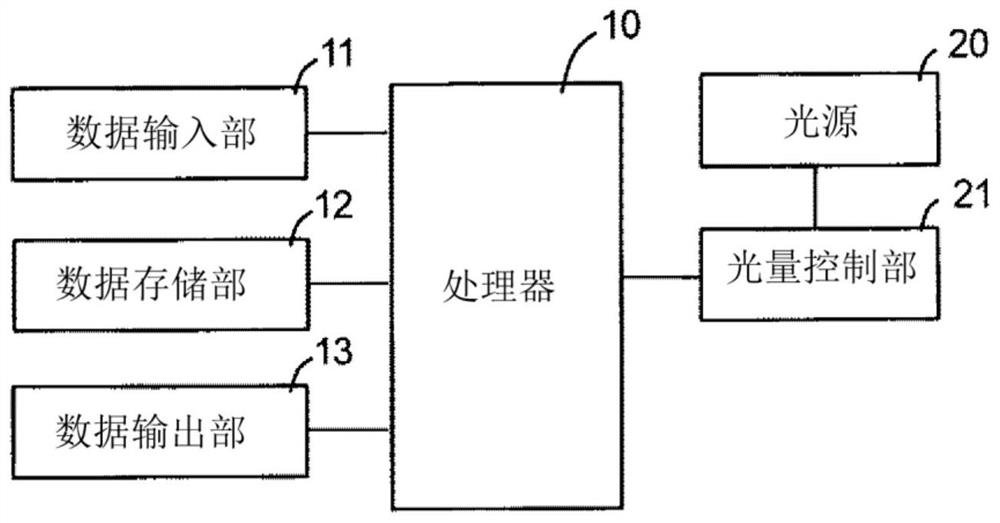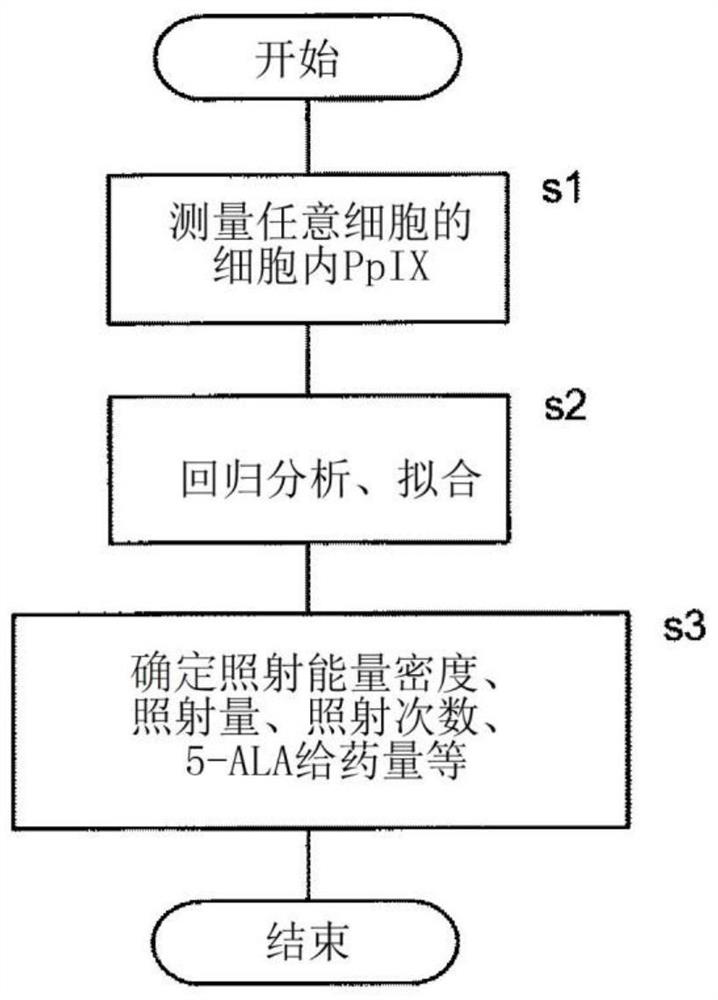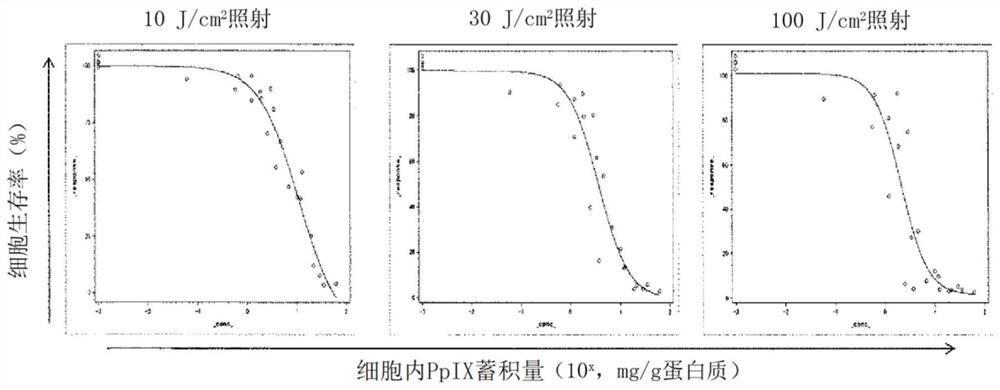Method for determining condition parameters for photodynamic therapy and photodynamic therapy apparatus
A technology of photodynamic therapy and conditional parameters, applied in the fields of phototherapy, radiotherapy, treatment, etc., can solve the strict relationship between the energy density of light irradiation and the cytocidal effect, the undisclosed amount of PpIX accumulation and the relationship between the energy density of light irradiation and the cytotoxic effect. Strict relationship of cytocidal effect etc.
- Summary
- Abstract
- Description
- Claims
- Application Information
AI Technical Summary
Problems solved by technology
Method used
Image
Examples
Embodiment 1
[0065] Using four cell lines (ATN-1, TL-Om1, HuT102, and MT-1) from human adult T-cell leukemia (ATL) and one HTLV-1 transformed (transform) cell line (C8166), through HPLC The amount of protoporphyrin IX (PpIX) accumulated in cells due to 5-ALA loading (0, 0.0625, 0.125, 0.25, and 0.5 mmol / L) was measured by chromatographic fluorescence detection as a cytocidal assay using PDT for all The cells were irradiated with light with a central wavelength of 630nm (10, 30 and 100J / cm 2 ), calculate the cell viability (%) based on the cell number assay kit Cell Counting Kit-8. For the results of all cell lines, according to each light irradiation energy density, the cell survival rate was plotted on the vertical axis, and the intracellular PpIX accumulation was plotted on the horizontal axis, and the regression analysis was implemented by the statistical analysis software SAS software Release9.3 ( image 3 ). As a result, the four-parameter logistic model (Table 1) was converged at a...
Embodiment 2
[0071] For Jurkat cells (human acute lymphoblastic leukemia cells) from human T-cell leukemia, which has a different disease classification from human adult T-cell leukemia, 5-ALA load (0, 0.0625, 0.125 , 0.25, 0.5 and 1mmol / L) and the amount of protoporphyrin IX accumulated in the cell, and then as a cytocidal test utilizing PDT, light irradiation with a central wavelength of 630nm (30J / cm 2 ), calculate the cell viability (%) based on the cell number assay kit CellCounting Kit-8. As a result, cell viability lies at image 3 On the regression curves recorded, it was proved that this relationship was strictly established even in leukemias with different disease classifications ( Figure 4 ).
Embodiment 3
[0073] (a way of clinical use)
[0074] After a cancer patient takes 5-ALAs, the amount of PpIX accumulated in the patient's cancer cells is measured (X), and the amount of PpIX accumulated in the cell and the therapeutic target value of the cytocidal effect (corresponding to the cell survival rate (Y)) Input to photodynamic therapy device. According to the input value, the photodynamic therapy device refers to the pre-programmed regression curve or a look-up table with a stepwise range derived from the regression curve to determine the light irradiation energy density (P) corresponding to the treatment target value, and implement the treatment. In this case, the intracellular accumulation of PpIX, the therapeutic target value of cytocidal effect, and the energy density of light irradiation may be continuous values or stepwise values.
PUM
 Login to View More
Login to View More Abstract
Description
Claims
Application Information
 Login to View More
Login to View More - R&D
- Intellectual Property
- Life Sciences
- Materials
- Tech Scout
- Unparalleled Data Quality
- Higher Quality Content
- 60% Fewer Hallucinations
Browse by: Latest US Patents, China's latest patents, Technical Efficacy Thesaurus, Application Domain, Technology Topic, Popular Technical Reports.
© 2025 PatSnap. All rights reserved.Legal|Privacy policy|Modern Slavery Act Transparency Statement|Sitemap|About US| Contact US: help@patsnap.com



